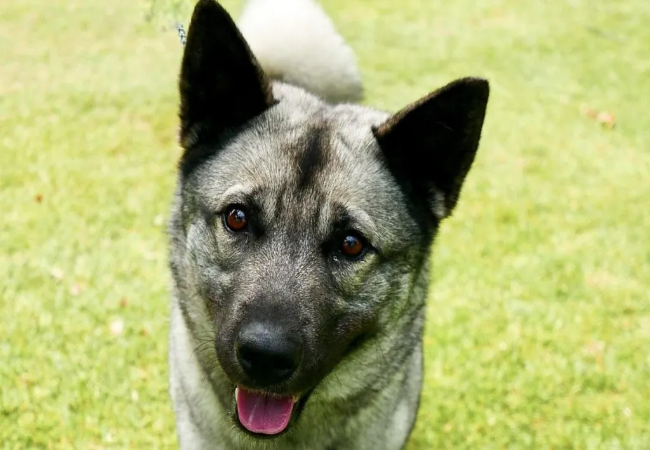Norwegian Elkhound Guide 2025: Loyal Viking Hunter Care 🐶✨

In this article
Norwegian Elkhound Guide 2025: Loyal Viking Hunter Care 🐶✨
By Dr. Duncan Houston BVSc
Introduction 🌟
The Norwegian Elkhound—often called the “moose dog”—is one of Norway’s oldest spitz breeds, revered since Viking times for hunting, guarding, and companionship. Known for its thick double coat, curled tail, loud bark, and big personality, the Elkhound thrives in active homes and cool climates. This complete 2025 guide covers everything from temperament and training to health, grooming, and ideal living environments.
1. Origins & History 📜
- An ancient breed—skeletal remains date back to 5,000 B.C., with Viking records and domestication thereafter.
- Bred for tracking and holding large game like elk, moose, and bear until hunters arrive, using loud barks and tenacity.
- Served Vikings aboard ships and in remote farms; recognized by The Kennel Club in 1901 and AKC in 1913.
2. Size & Coat 🧥
- Height: 19–21 in; Weight: 44–60 lb (20–27 kg).
- Resilient spitz build—compact yet muscular, with erect ears and a tightly curled tail.
- Weatherresistant double coat: coarse gray guard hairs tipped in black, softer undercoat—ideal for cold climates.
3. Temperament & Personality ❤️
- Loyal, affectionate, and family-oriented—often described as “clingy Vikings”.
- Alert and protective, with a deep, loud bark—excellent watchdogs.
- Independent and strongwilled—intelligent but not overly eager to obey, requiring consistent leadership.
- Good with children and other dogs when properly socialized, though hunting instincts may prompt smaller prey chasing.
- Very vocal—barking is natural and purposeful, though it can overwhelm if untrained.
4. Exercise & Mental Stimulation 🧠
- High energy—requires 1–2 hrs of vigorous activity daily: walks, runs, hikes, tracking, or dog sports.
- Thrives on purposeful work—tracking, agility, nose games, and structured play prevent boredom and destructive behavior.
- Not suited to apartments if not exercised enough; a secure yard is beneficial.
5. Grooming & Coat Care ✂️
- Brush weekly—and daily during seasonal sheds—to manage thick undercoat.
- Bathe only when necessary to preserve coat oils; monthly brushing of nails, weekly ear checks, and regular dental care are recommended.
6. Health & Lifespan 🩺
Lifespan: 12–15 years.
Common Health Concerns:
- Hip/elbow dysplasia—screen via OFA/PennHIP.
- PRA and glaucoma—genetic eye testing advised.
- Fanconi syndrome and chondrodysplasia—rare genetic conditions; screening is beneficial.
- Accessory health issues: obesity, cysts, dental disease, barking-induced sore throats.
7. Nutrition & Feeding 🍽️
- Feed high-quality adult/active breed kibble in two meals daily to regulate metabolism and energy.
- Provide fresh water at all times; monitor weight and adjust portions accordingly.
- Joint and skin support (like omega‑3) may benefit older dogs.
8. Training & Socialization 🎓
- Use consistent, positive reinforcement—short, engaging sessions work best.
- Early socialization—especially for stranger interaction and smaller pets—helps offset prey instincts.
- Training must be confident and structured to manage independence and barking habits.
9. Family Fit & Environment 🏡
- Best for active families, experienced owners, and those who enjoy outdoor adventure.
- Great with children and other dogs when trained; supervision around small animals recommended.
- Thrives in cool climates; not heat-tolerant.
- Apartment living is possible with enough exercise, but a secure yard plus structure is ideal.
10. Pros & Cons ⚖️
- ✅ Pros: Loyal, vigilant, longlived, great with kids, adaptable.
- ⚠️ Cons: Heavy shedding, vocal, independent, high exercise needs, heat sensitivity.
11. Adoption & Breeder Guidance 🌟
- Find responsible breeders with clearances for hips, eyes, and genetic conditions.
- Rescue options exist—look to breed clubs and Nordic dog rescues.
- Price: $700–5,000 depending on lineage, region, and health testing.
12. FAQs ❓
- Do they shed? Yes—heavy shedding twice yearly, with constant moderate shedding.
- Are they good with kids? Yes—gentle and protective, but supervise due to size and playfulness.
- Do they bark a lot? Yes—natural and purposeful barking; training can manage excess.
- Can they live in apartments? Possible with enough daily exercise; prefer yards.
- How long do they live? Typically 12–15 years.
- Do they tolerate heat? No—sensitive to high temps; avoid exercise in heat.
13. Ask A Vet, 🐶
- Ask A Vet: Get expert insights on hip health, eye screenings, bark training, and heat management.
14. Final Thoughts ✅
The Norwegian Elkhound offers a powerful blend of Viking heritage, loyalty, intelligence, and endurance. Ideal for active, committed owners in cooler climates, this versatile spitz thrives with purpose, structure, and companionship. Ready to bring home a proud companion? For indepth guidance and support, visit AskAVet.com and download the Ask A Vet app—your expert partner in lifelong canine care!






